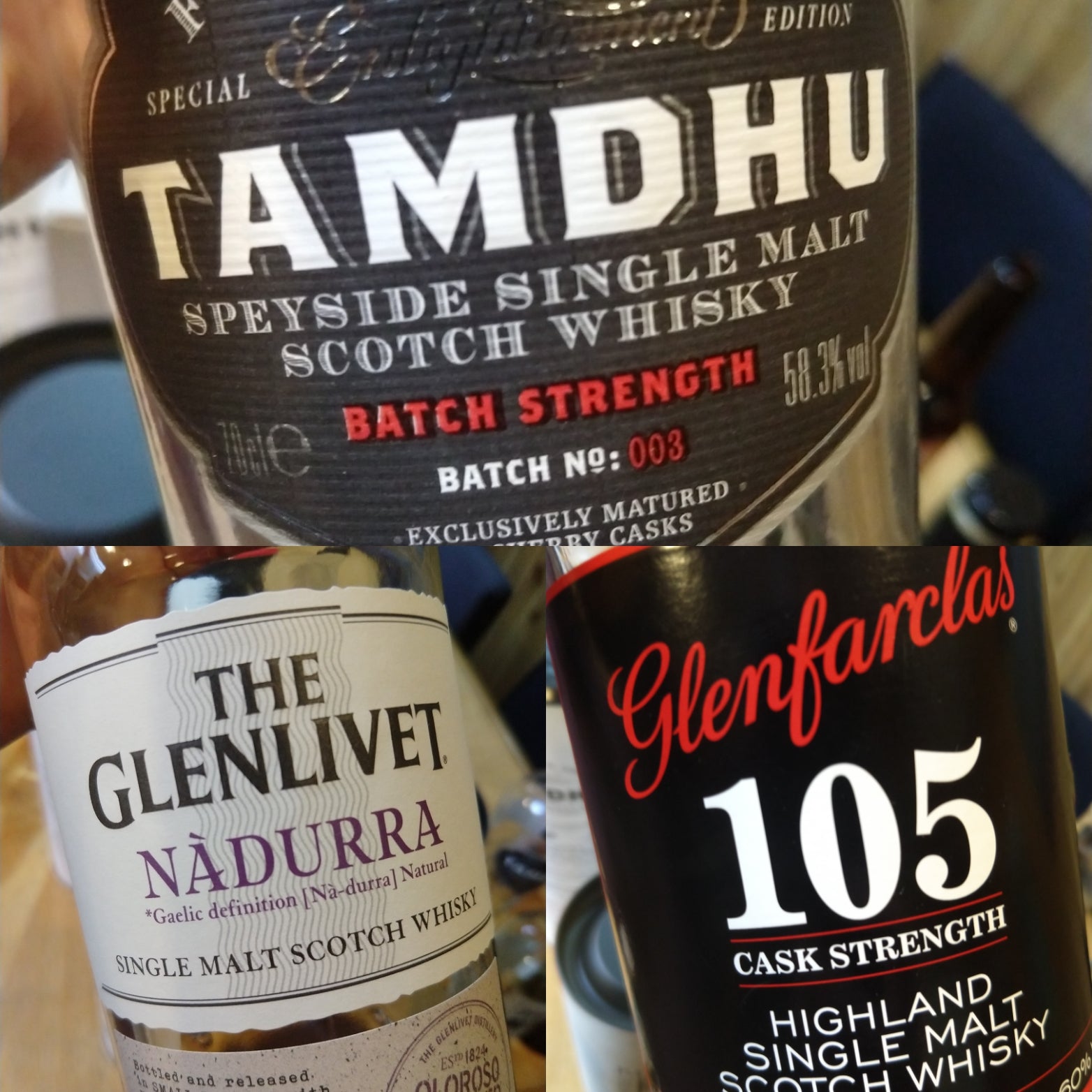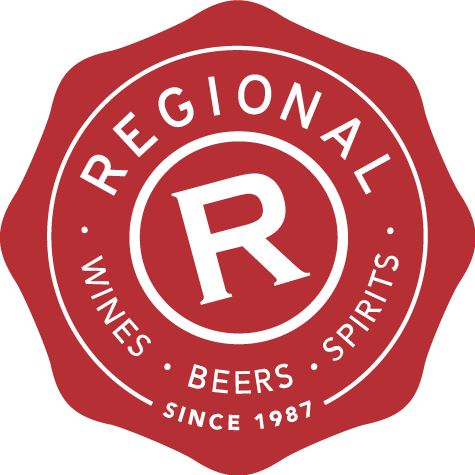
Big Little Whiskies at Regional Wines
As I cleaned the tables after the second night of the tasting, I discovered a spillage of whisky that had soaked into a tasting mat. It had drawn ink out of the paper and into the wooden table top, and had left an indelible, if somewhat indecipherable, tasting note stain, which would not come off for love nor money. It appeared the whiskies had left a lasting impression.
As you may know, we enjoy a single cask here at regional; something independent or rare with an almost angular attitude that has not been smoothed away by blending, vatting or house styling. However, It has to be said, this line up of (relatively) cheap cask strength official distillery releases was, well, pretty impressive.
The lineup was like a coming together of old friends, the reliable ones that have constantly been there for you year in year out, and on this occasion, they didn't disappoint. Nothing tanked and the scores all came in around 8 and above - one even hitting the nines. But that is exactly the selling point of these whiskies - you may pay more for a no age statement than you might for, say, a distillery's twelve year old, but with this trade off comes a dram at cask strength with great depth of flavour.
The Glenfarclas 105 was our opening gambit - the old stalwart of the cask strength official bottling scene and which pretty much invented the style. Originally bottled as a Christmas gift by George S. Grant for distillery workers and friends, the 105 was officially released way back in 1968 - 105 being the British proof for 60% abv. It held up well, with its big hit of oloroso, tobacco and mothballs freshly picked from a dusty of wardrobe, but was quickly eclipsed by another classic, the Aberlour a'Bunadh. One of those go to drams that rarely fails to raise a smile, and which has always done well at Regional tastings, notably winning our Best of the Best tasting two years ago. This was a plate of Peking duck with plum sauce eaten off a sandalwood table, followed by treacle tart doused in star anise and cardamom custard - a real mouthful!
People talk of a perceivable drop in quality for the a'Bunadh over recent years, fuelled by a demand from supermarket chains in the UK that they simply can't keep up with. Always hard to comment on such gradual changes, but if you were lucky enough to attend our a'Bunadh vertical a couple of years back, you might remember that the whiskies showed no perceivable drop in quality between batch 46 and 58 (somewhat proved by tasting them young to old on one night and then old to young the following night - on both nights the whiskies were simply perceived as better the later they were in the lineup (which in itself is a topic for another day)). However, interestingly, on that occasion they mostly scored in the high eights and nines, whilst at this tasting, the mighty a'Bunahd only managed a paltry 8.6 - food for thought indeed.
The a'Bunahd was followed by the Glengoyne Cask Strength Batch #5 59.1%, a whisky which recently popped up at our Malts of the Midlands tasting where it scored a very respectable 8.58. This certainly showed some pleasant cookie dough qualities often associated with the central belt, but was outshone by the rich sherried flavours of those around it, and notably limped away with a much lower 8.03. At the Midlands tasting, it had formed part of a second flight at cask strength following four whiskies in and around 43% - so was this solely cask strength tasting showing how differently we score when the playing field is levelled? Cask strength whiskies have always done well at the Regional tastings, but string seven of them together and the scoring is moderated, it would appear.
Next up were a brace of peated whiskies, starting with the Kilkerran 8yo 56.5%. This was a real belter of a whisky; a serving of peppered mackerel on lightly charred rye bread and drizzled with lemon juice. It came last, unfairly in my opinion, but then its peaty profile had it at a slight disadvantage from the get go. The Ardbeg Uigeadail was its peat partner on the evening, a whisky I've been wanting to get into a blind tasting environment for a while now, it being the go to Ardbeg (IMHO) and typically offering very handsomely integrated peat and sherry flavours, delivered at a high abv and moderately priced to boot. It certainly held its own, but didn’t wow, placing 4th with a score of 8.41, and had me wondering if we should have gone with the Corryvrecken?
The final pair were the show stealers by far, and both with a proven track record at Regional tastings. The Glenlivet Nàdurra Oloroso 60.3% made a recent appearance at the Myshterry tasting last july, where it came second behind the Glenburgie Gordon & Macphail 1995 - 2017 22 years 56.5% which went on to win Best of the Best last year, so it would obviously take some stiff competition to beat it. This was duly provided by the Tamdhu Batch Strength #3 59%, a marvellously complex number with Crème brûlée balanced by savoury walnuts, and which seemed to dance in the palate with a quicksilver lining. It scored in the nines, and rightly so.
So, a tasting that raised more questions in the age-old debate of vatting and house style versus the single cask. For every person singing the praises of distillery style, there is a voice championing the single cask or independents bottler. When you look at aged whiskies - 15 years and above - official distillery releases becomes pricey very quickly, and are typically delivered at 43-46%, and In this bracket, it’s fair to say that the inde bottlers come into their own. In the same breath though - the Glenlivet Nadurra and Tamdhu were available on the night for around $100, and, at that price, you would certainly struggle to find an independently bottled single cask whisky matching the quality they showed...
Here are the scores,with links to purchase.
